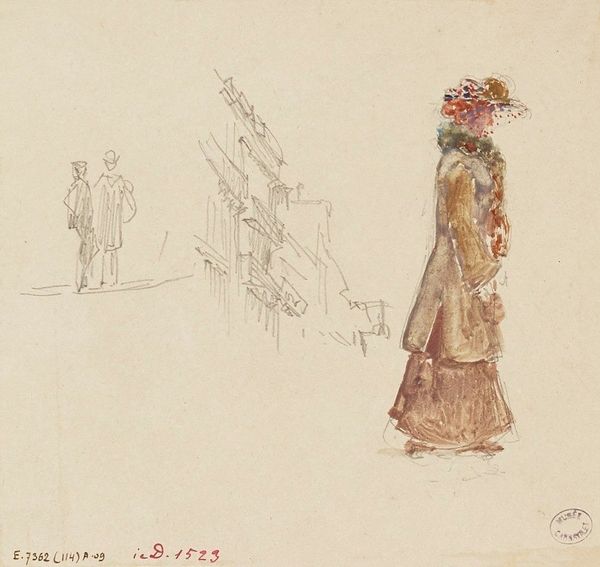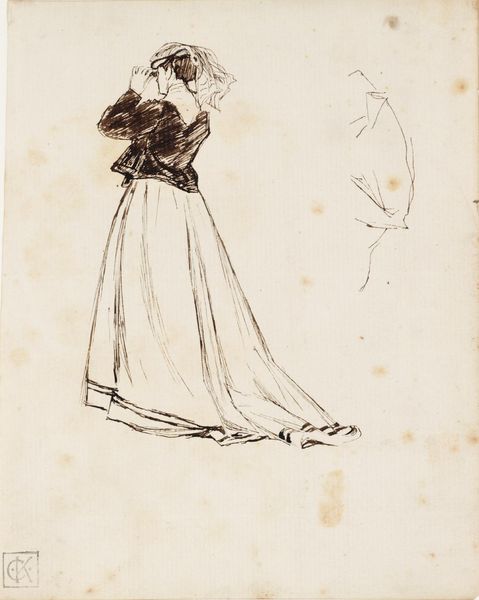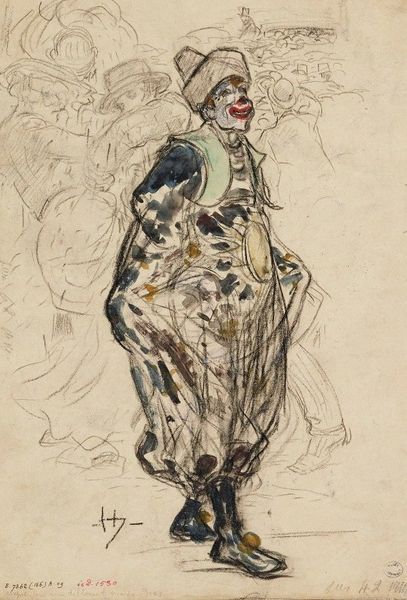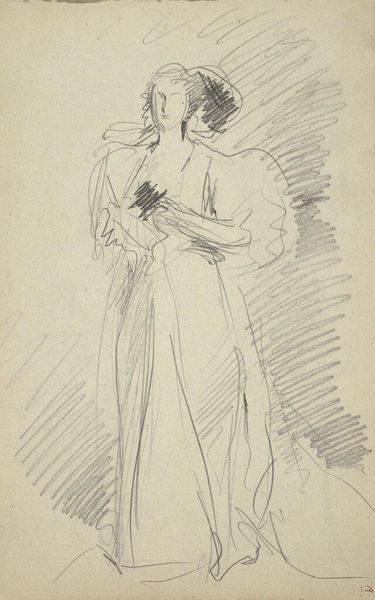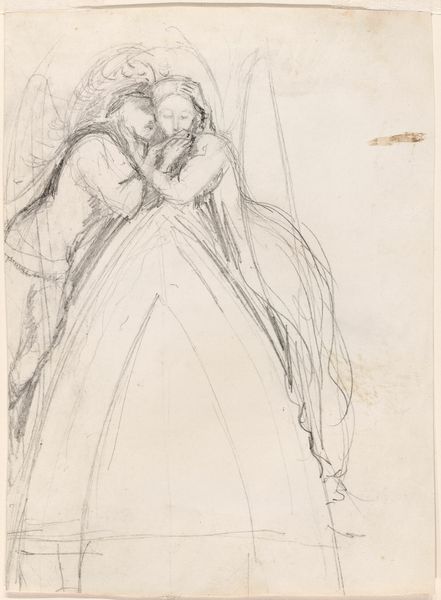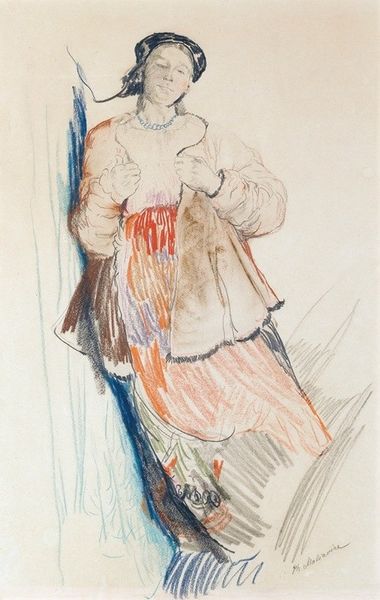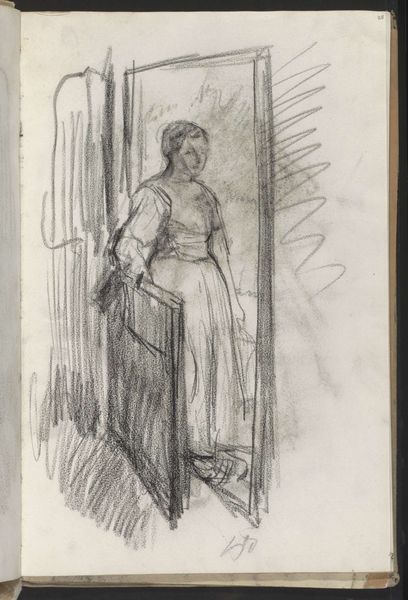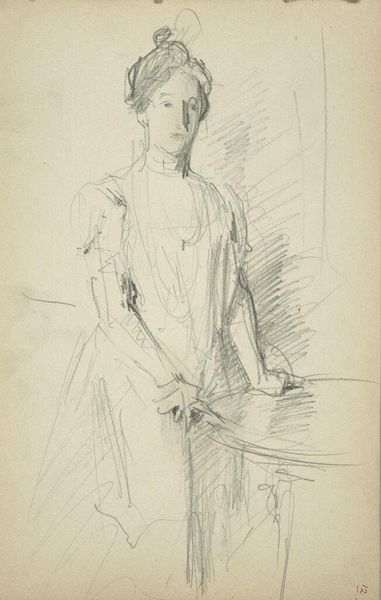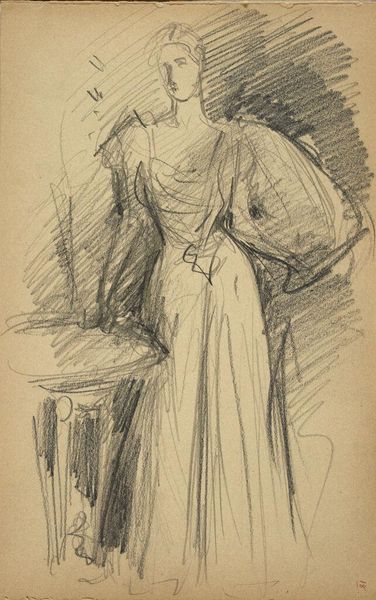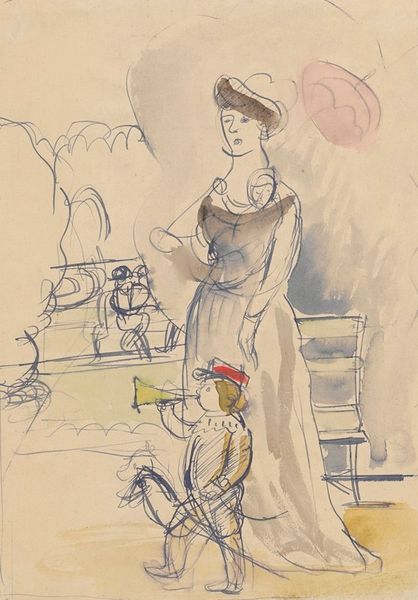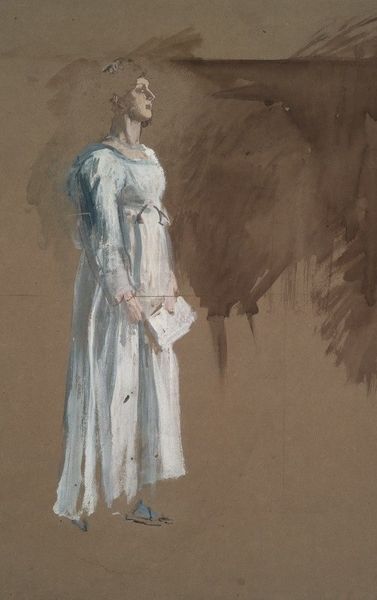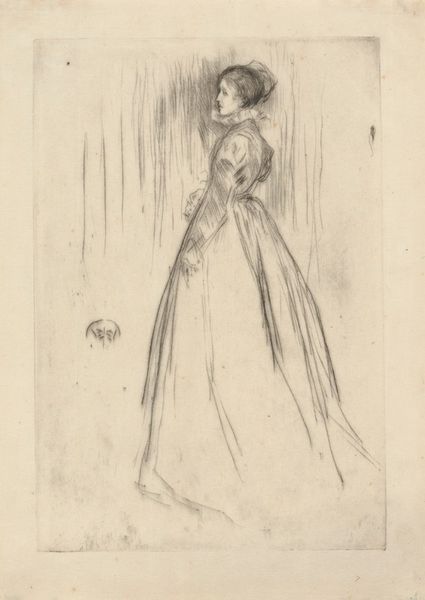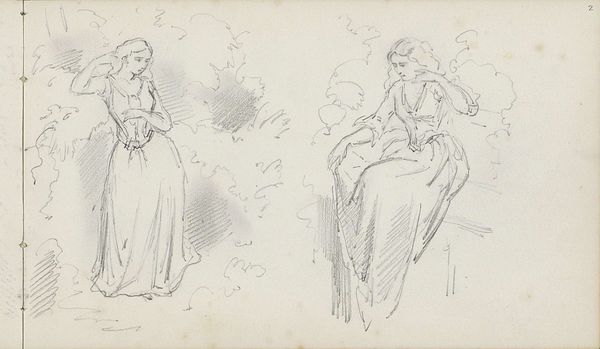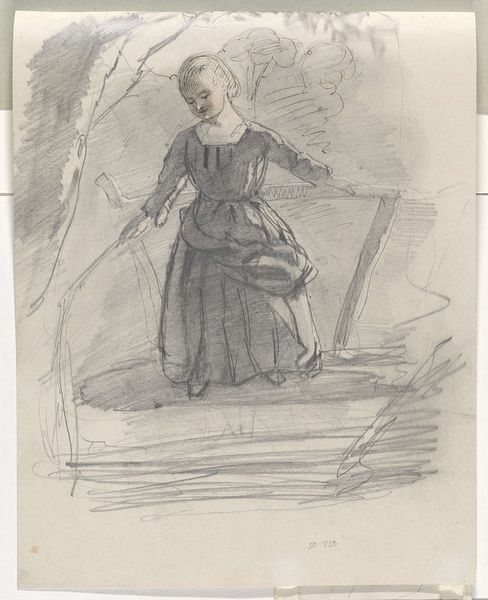
Copyright: Public Domain: Artvee
Editor: This is "Blanchisseuse," a drawing in pencil and watercolor by Frédéric Houbron, made sometime between 1895 and 1905. I find it so evocative, almost ghostly, like a memory captured on paper. What do you see in it? Curator: It's true, isn't it? The light brushstrokes, the delicate washes... Houbron gives us not just a washerwoman, but a sense of transience. For me, it speaks to the everyday struggles of women, of labor often overlooked. Do you feel a weight to the work, even though it's rendered so delicately? Editor: Yes, the large basket on her back – it suggests a certain burden. What do you make of the almost unfinished quality of the background? Curator: Exactly! It places the focus squarely on the woman, isolating her. It's as if Houbron wants us to contemplate not just her job, but *her* - her humanity. It makes me wonder what her life was, outside of that single moment. Isn’t that something? Editor: It is, absolutely! The incompleteness almost invites you to fill in her story. Curator: Precisely. And perhaps that's the point of art, isn’t it? To invite us to co-create, to feel a connection across time and experience. It has something more personal for the artist. What has Houbron’s artistic creation invited in us today? Editor: I’m seeing how the fleeting, impressionistic style can also serve to highlight a very real social reality, making her experience all the more poignant. Thanks! Curator: My pleasure! It's those layers of meaning, those whisperings from the past, that make art such a resonant experience.
Comments
No comments
Be the first to comment and join the conversation on the ultimate creative platform.
